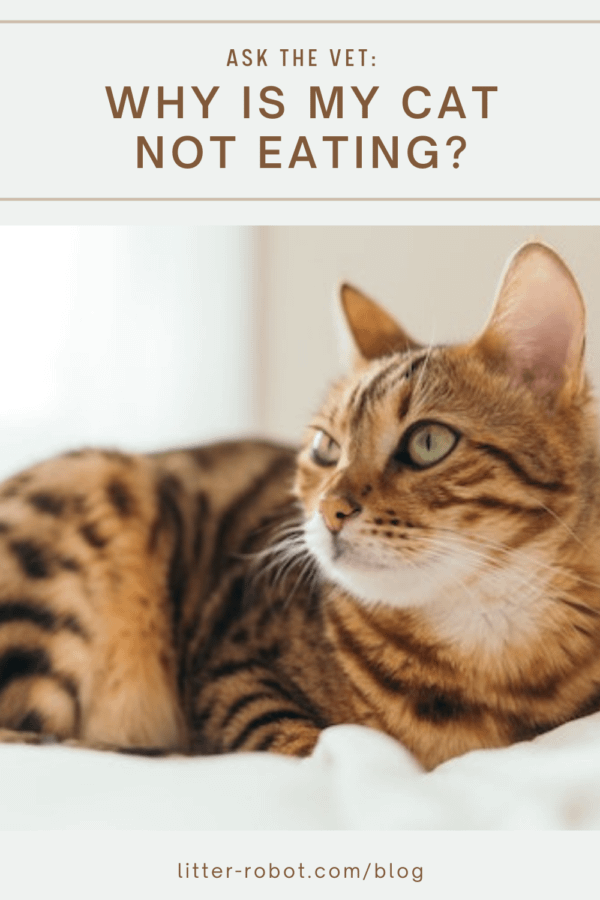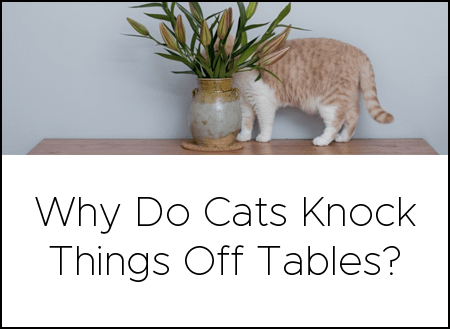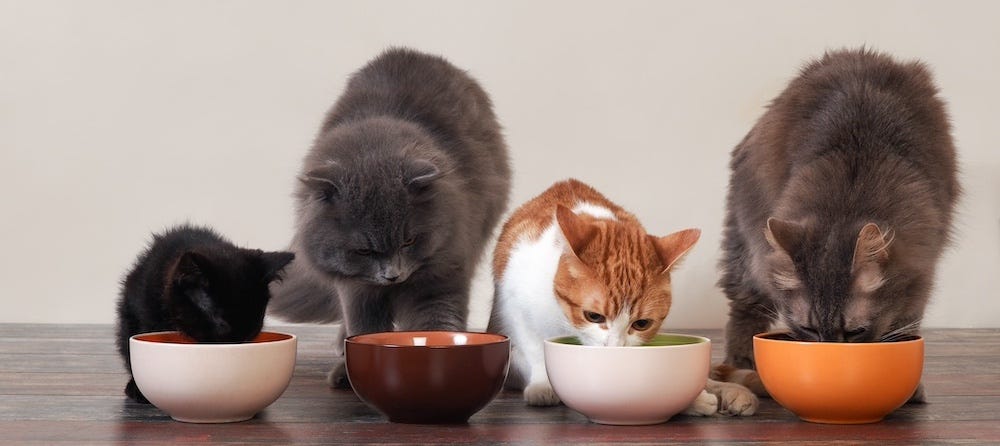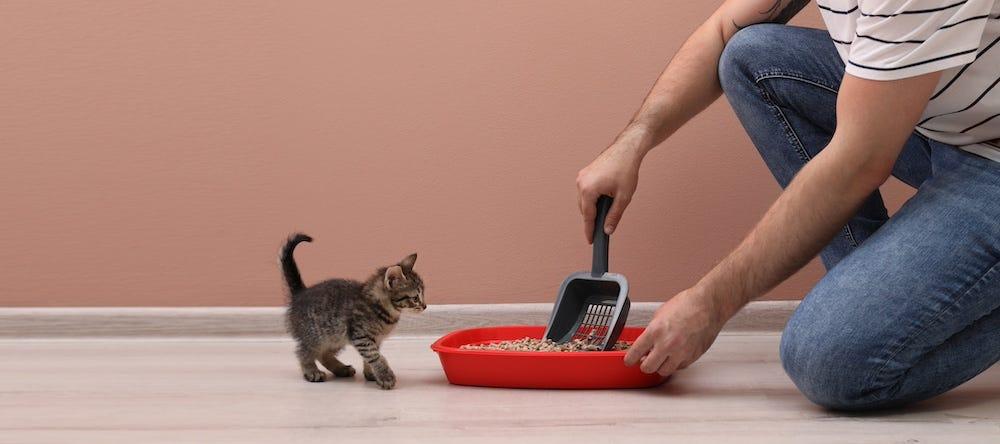Help! Why is my cat not eating?
A decreased appetite—called hyporexia in veterinary medicine—can be due to numerous underlying reasons. In cats, sometimes this can be from minor causes such as stress or changes to the environment, to more serious medical problems like inflammation of the pancreas (e.g., pancreatitis), inflammatory bowel disease, kidney failure, or even cancer. Regardless of what the cause of your cat’s decreased appetite may be, you need to get your cat eating fast—or it’ll warrant a trip to the veterinarian if there’s no improvement.
Causes for a decreased appetite in cats
While this list isn’t all inclusive, if your cat won’t eat, it may be due to the following:
- Environmental changes (like introducing a new cat or family member into the household, acutely changing the diet, going to the groomer, etc.)
- Dental disease (like gingivitis, an infected tooth, or Feline Oral Resorptive Lesions)
- A poisoning
- An gastrointestinal foreign body (from a passing hairball to a large plastic object or string, which may require surgery to fix)
- Constipation
- Infections
- Kidney disease or even kidney or bladder stones
- Liver disease
- Inflammation of the pancreas (e.g., pancreatitis)
- Diabetes mellitus
- Inflammatory bowel disease (IBD)
- Recent medical or anesthetic procedures (like vaccination, surgery, or dental cleanings)
- New medications (like antibiotics, chemotherapy drugs, etc.)
- Anemia
- Cancer
Regardless of what the cause of hyporexia is in your cat, you’ll want to get to a veterinarian soon. That’s because cats can only go a few days without eating before they can develop fatty changes to their liver. This is called hepatic lipidosis, which can be life-threatening if not treated.
When do you need to become concerned if your cat won’t eat?
My general rule is if it’s been more than 24 hours of your cat not eating, you need to start worrying. If you notice this, call your veterinarian immediately, as it’ll take several days to get an opening or appointment. If in the event your cat starts eating before the appointment, great! You can cancel the appointment 12-24 hours before! However, if your cat still isn’t eating normal amounts—and you’ve tried to tempt your cat to eat (see hints on the section “How to get your cat to eat” below)—a veterinary visit or even trip to the veterinary ER is a must.
Another factor that makes me concerned when your cat stops eating? How acute or gradual the not-eating is. If it’s acute, it can be from sudden problems like a hairball or mild pancreatitis, and sometimes just tempting your cat to eat can get them through the hyporexia episode. (Again, see the section below on “How to get your cat to eat”.) More gradual decreases in appetite make me worried that something more serious is going on, and definitely warrants a more aggressive work-up to rule out causes such as dental problems; metabolic, endocrine, or gastrointestinal problems; or even underlying cancer.
What makes me less concerned if your cat has a decreased appetite? If your cat just underwent a recent medical procedure, I’m not as worried about a mild decrease in appetite, as that’s not unexpected. Sometimes some extra TLC and tasty morsels is all that’s necessary. But if your cat didn’t undergo a medical procedure, then we need to find out and fix the underlying problem fast.
How to get your cat to eat
So, what should you do if your cat won’t eat? The most important thing to keep in mind when your cat has a decreased appetite is that variety is the spice of life. Try these DIY appetite stimulants for cats by offering some palatable, tasty food options, such as:
- Canned tuna in water (not oil)
- Meat-based human baby food (Gerber turkey, Gerber chicken)
- Prescription high-calorie food from your veterinarian (such as Hill’s a/d, Purina C/M, etc.)
- Canned cat or kitten food that has been microwaved briefly (for approximately 10 seconds, so it’s slightly warm to touch but not too hot!)
- Chicken broth (make sure it contains no garlic or onion)
- Benito tuna flakes
- Cat treats (Temptations, etc.)
NOTE: While I’m all for tempting cats to eat, please don’t ever force feed your cat. To me, this makes your cat run away from you, and you can’t physically get enough calories into a cat by force feeding or syringe feeding your cat. It also can make them develop food aversion, where they actually lose their interest in eating. If you’re worried about how many calories or days your cat goes without food, it’s better to talk to your veterinarian about putting a temporary feeding tube into the esophagus or into the stomach long-term to get a liquid diet into your cat instead.
What if you tried all that and your cat still isn’t eating? Well, it could mean that your cat is nauseated, in pain, or, again, having something behaviorally or medically going on. If your cat is nauseated or vomiting and shows disinterest in food, it’s often better to avoid keeping food out at all times. If your cat turns away, starts drooling, or vomits shortly after eating the food, contact your vet, as these are signs of underlying nausea. As you can imagine, if someone offered you a burrito when you were nauseated, you’d turn away too!
When to see your veterinarian
So, you tried to tempt your cat, and your cat won’t eat the tasty morsels. You’re still wondering: Why is my cat not eating? You’ve noticed some drooling, vomiting, or worsening, complete anorexia (not eating anything at all). Well, that warrants a prompt veterinary exam for a thorough physical examination and medical work-up. Your cat will likely need the following tests done at your veterinarian:
- Basic blood work (like a complete blood count, biochemistry panel)
- Thyroid test
- Urinalysis
- X-rays or ultrasound (I always like to have my abdominal ultrasounds performed by a board-certified veterinary radiologist, called a Diplomate of the American College of Veterinary Radiology or “DACVR” for short)
Depending on what these tests show, your veterinarian may recommend either outpatient therapy or hospitalization. This may include treatments like certain medications, intravenous (IV) or subcutaneous (e.g., under the skin) fluids, or even hospitalization! Medications may include safe prescription medication (e.g., maropitant or “Cerenia”, ondansetron or “Zofran”, metoclopramide or “Reglan”) to treat the gastrointestinal signs of nausea or vomiting.
Appetite stimulants for cats
Other medications that your veterinarian may start include one of two different types of prescription appetite stimulants for cats. One comes as an oral or transdermal medication (where you apply a small “line” of the medication to the inner pinnae or ear of your cat) called mirtazapine. The other comes as an oral liquid (e.g., capromorelin or “Elura”). These are really designed only for short-term use—in other words, just a few days to get your cat eating again.
How do I prevent a decreased appetite in my cat?
There are several steps you can take to prevent a problem with your cat not eating. Believe it or not, you don’t need to mix up flavors or brands or types of food, as this can actually make your cat more finicky! While I may mix in wet food as a treat occasionally, I keep my cat on the same type of dry food and make sure to transition to a new bag slowly and gradually. (Yes, that’s even necessary with the same brand!)
Next, follow these few steps to make sure that you’re keeping your cat’s appetite normal and healthy.
Minimize stress
The first step to making sure your cat doesn’t develop a decreased appetite is to minimize stress. The Ohio State University Indoor Cat Initiative has great information on environmental enrichment for our feline family members. Simple steps like keeping the food bowls away from the kitty litter boxes is a great place to start. After all, do you eat in the bathroom? Probably not. Next, make sure to put the litter boxes and food and water bowls in a quiet place—without the potential sudden noise turning on and freaking out your cat! (Like the water heater, dehumidifier, or air filter randomly turning on.)
Another easy way to minimize stress? Chemical intervention! Making sure your cats get along or using supplements or prescription medications to decrease environmental stress may also help. I love products like Feliway, a chemical pheromone that you can use as a diffuser or spray. If your cat gets stressed easily—especially for car rides, family visits, or visits to the veterinarian—talk to your veterinarian about a “Fear-Free” approach using safe, prescription medication (e.g., gabapentin, trazodone, buprenorphine, etc.) to give to your cat at home prior to the visit.
Monitor their appetite
I’m a big fan of carefully monitoring your cat’s appetite. The sooner you notice a problem, the sooner you should get to a veterinarian. If you have multiple cats, this is of particular importance, as it may be harder to quantitate how much everybody is eating. (You might consider using an automatic pet feeder where you can monitor your cat’s feeding habits from your phone.)
Weigh your cat
On a side note, this is also why I’m a huge advocate of weighing your cat once a month once they turn over 10 years of age. As cats age, they are more at risk for some of these organ- or endocrine-related medical problems, where we start to see gradual weight loss and decreases in appetite. I was able to detect my cat’s cancer because I weighed her consistently once a month for years. My cat Lily was always consistently 11.7 pounds, and one month, she had dropped 0.3 pounds. While you wouldn’t visually notice this as a pet parent—or a veterinarian—it was my first clue to an underlying problem.
Most importantly, keep a close eye on your cat’s appetite. I always want you to keep your cat at a healthy weight, but I also want you to pick up on medical problems as early as possible—especially one as serious as your cat not eating. That’s because the sooner we notice a problem, the sooner we as veterinarians can fix it, helping to keep your cats healthy and happy!
Cover photo by Paul Hanaoka on Unsplash









